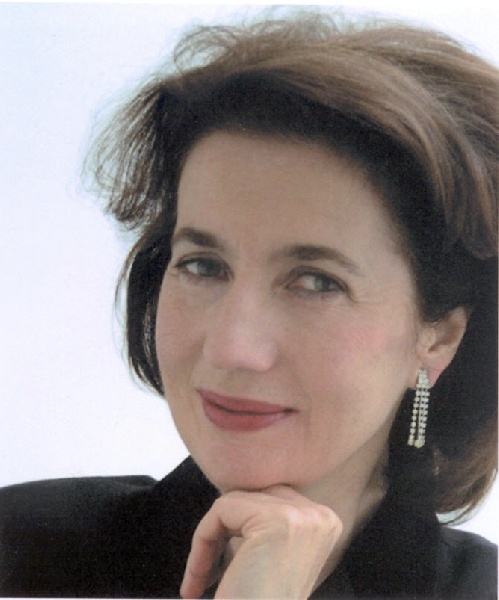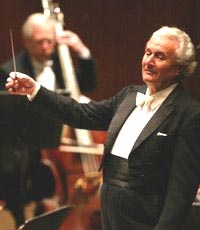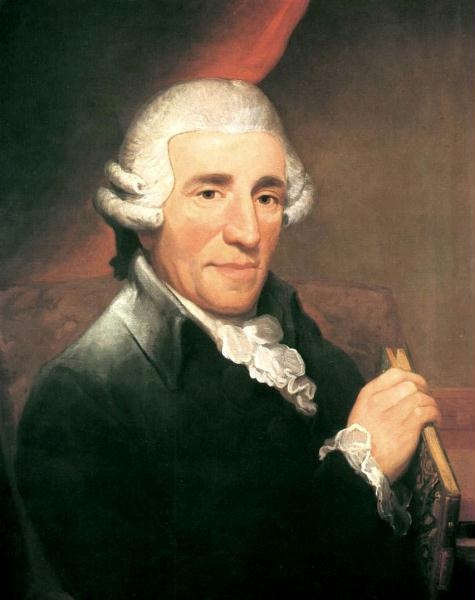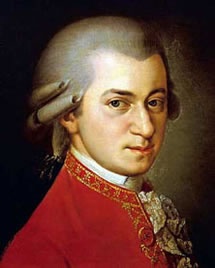Sir Colin Davis and Imogen Cooper Return to the BSO with Mozart and Haydn
Energetic symphonies and a probing Mozart C Minor piano concerto
By: Michael Miller - Jan 24, 2007
Boston Symphony Orchestra,Symphony Hall, Boston, January 19, 2007
Sir Colin Davis, Conductor; Imogen Cooper, CBE, piano
Wolfgang Amadeus Mozart, Symphony in C Major, no. 34, K. 338; Piano Concerto in C Minor, no. 24, K. 491; Franz Josef Haydn, Symphony no. 102 in B Flat
The Mozart/Haydn program of this past week brought back memories of some fine performances of this repertoire when Sir Colin Davis was Principle Guest Conductor of the orchestra and marked a very welcome return of the English pianist Imogen Cooper, who played Beethoven's first piano concerto so superbly at Tanglewood this past summer and will return to play his Third this coming July. This week she took on a more formidable challenge, Mozart's concerto in c minor, K. 491 (1786), which, in order to succeed, has not only to be just right, but must express a mature understanding of Mozart's highest expressions. Not to trifle, I'll say right out that she succeeded admirably in inhabiting Mozart's complex world of fleeting emotions and astonishing beauty. Miss Cooper's performance was framed by Mozart's Symphony in C Major, no. 34, K. 338, a work of his early maturity (1780), one of the last pieces he composed in Salzburg, and Haydn's Symphony in B Flat Major, no. 102, first performed in London in 1795.
The daughter of a musicologist, Imogen Cooper studied in Paris and Vienna with an array of the most distinguished teachers, including Yvonne Lefébure and Alfred Brendel. It is interesting to note that she also studied in London with the remarkable pianist Kathleen Long, whose reputation has recently undergone a renaissance, thanks to the beautifully restored reissues by Pristine Classical of her recordings of Fauré piano works (1. Ballade, Nocturnes 2. various) , which have become great best sellers. Today Miss Cooper has earned much admiration for her performances in all areas of piano repertory, including concerti, chamber music, contemporary music, Lieder (with Wolfgang Holzmair), and the solo piano music of Schubert and Schumann. She has just been appointed CBE in the 2007 New Year's list.
Sir Colin's method and his repertory of gestures have altered little over the years, except perhaps in the direction of simplicity, and his basic approach to Mozart's sonorities hasn't changed that much either, particularly in this rather early work. In Sir Colin's Mozart the winds are crisp and full-bodied, holding their own amidst a string sound which has probably grown fuller with age. As in the beginning, Sir Colin uses the contrast of winds and strings to create energy and drama, as well as to define structure. But let me not forget to mention that he looked quite relaxed during this piece, eliciting a thoroughly characteristic performance from the big ensemble he chose to employ, and making no secret of the fact that he was having great fun with this playful but ambitious work. He gave the horns their due, enriching the textures of tutti and reinforcing off-the-beat accents in climaxes. In the wistful slow movement the string sections remained distinct, as he cherished each phrase of Mozart's attractive primary tune, while not impeding its flow. Sir Colin let the finale have all the energy and weight it needed, allowing the details to blend together. He saw no need to point out every detail, in spite of the richness of Mozart's score, which, especially in Sir Colin's reading, foreshadows the grandeur of his later work.
The piano concerto K. 491, which Mozart completed in late March, 1786, a month before Le Nozze di Figaro, and which reflects some of its more poignant moods, reflects a contrasting simplicity and tunefulness like that of the A Major Concerto (K. 488) he had finished three weeks earlier. The rich figuration of the concluding variations provides no shelter for musicians who can't get to the heart of the music. The first movement began with a rhythmically marked, even severe statement of the primary theme in strings and double reeds, followed by a more lyrical continuation with the full orchestra. The second subject was decidedly broader. Miss Cooper's entrance was firm, but restrained. Her tone was clean and nicely balanced with Sir Colin's characteristic Mozart sonority, with its well differentiated textures and wind parts amidst large string forces. Her playing was flexible and finely nuanced in phrasing, and, as the performance developed and she became more relaxed, she used diminuendo to great effect in emphasizing key moments and moving dynamically above and below the orchestra. As meticulously prepared as it was, this was very much a free performance of the work. Interaction and balance between orchestra and soloist occurred within the flow of the music. Exquisite detail never got in the way of what was essentially a probing approach to the music. Miss Cooper is not one to come to the stage with preconceived notions of timbral effects she intends to make with the orchestra, a technique her teacher, Alfred Brendel, has mastered especially effectively. The great Brendel was still present at this performance, however, since Miss Cooper chose to play his excellent cadenzas.
The more she became immersed in the music, the more understated her playing became. However, she used this quality expressively, never holding back from exploring any particular beauty of tone or phrasing. What's more, her chords had all the requisite weight and her dotted rhythms all the bite. Miss Cooper's c minor was not only one of the most beautifiully played performances I have heard, but also one of the most moving. The seasoned Friday matinée audience rose enthusiastically to their feet in applause.
Sir Colin's Haydn Symphony No. 102 in B Flat Major, showed a marked development over his earlier approach. His reading was larger, grander, and more energetic than before and reminded one of Haydn's pupil Beethoven in its grand dynamics and drive. He conducted the Menuet, which Haydn marked allegro without using the word scherzo, as a boisterous true fast movement in which the courtly interchanges of the old dance gave way to Beethovenian high spirits. But to go back to the beginning, the introductory Largo was very broad indeed, and expressively phrased. The Boston Symphony played superbly both here and in the ensuing vivace, doing full justice to Haydn's subtle interplay of sonorities and textures. Not only has Sir Colin's interpretation evolved, the improvements in the orchestra's playing and the seating of the players with split first and second violins allowed him to achieve a good deal more than the BSO of the 1970's and 1980's. They were able to achieve a wonderful range of dynamics and texture in the slow movement, with subtle effects in the interplay between the solo cello and the string sections in pp sections, where inner voices in violas and cellos needed to be heard. Sir Colin also used horns to bring out off-the-beat accents, which added terrific energy in rapid tutti. This was splendid Haydn from one of the master's great interpreters and a responsive BSO.





